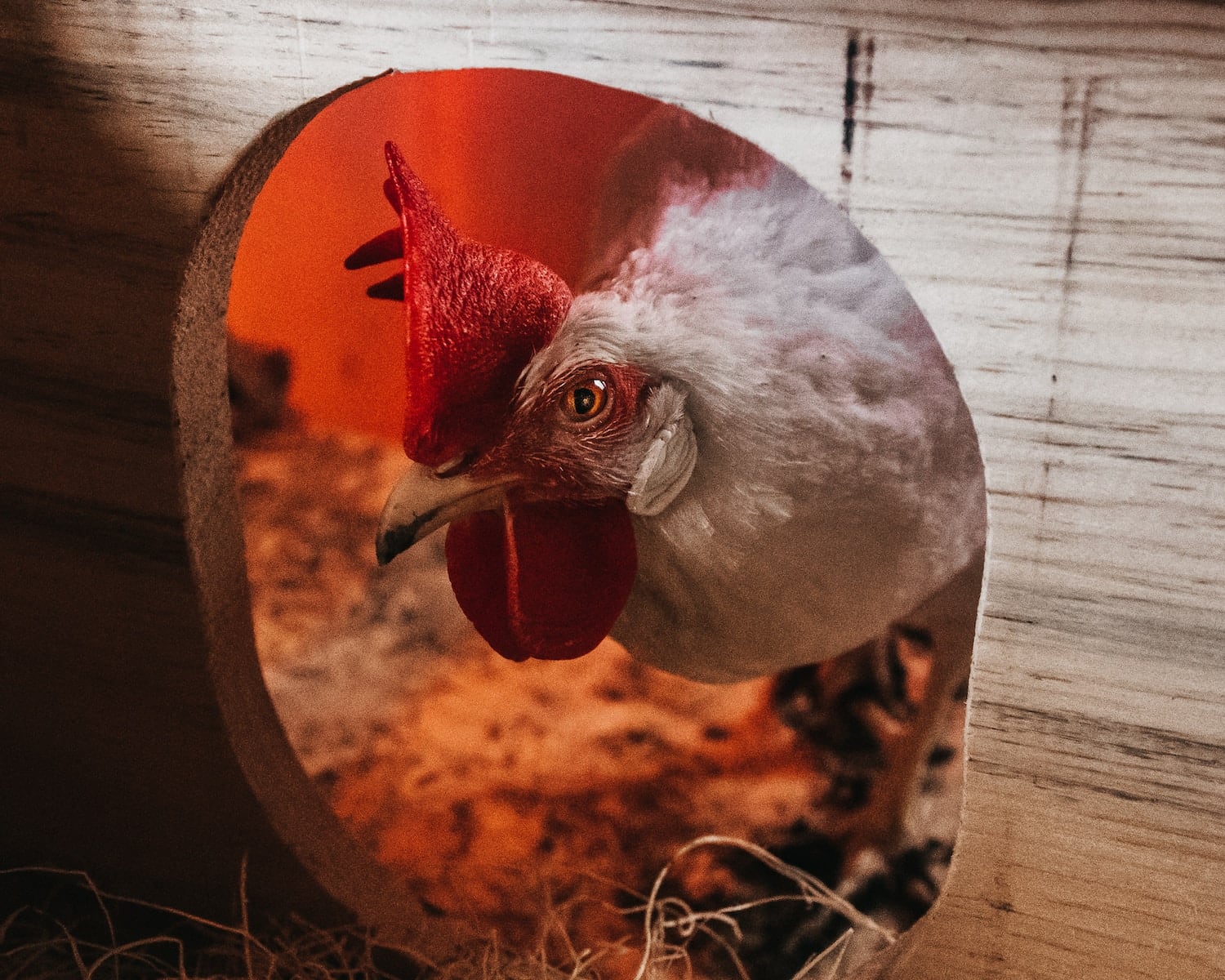As a chicken owner, I understand the importance of nesting boxes for egg-laying hens. They provide a safe and comfortable environment for hens to lay their eggs. So, it can be perplexing when chickens don’t use these nesting boxes despite our best efforts to make them appealing. In this article, we’ll explore some potential reasons why chickens might be shunning their designated nesting areas.

There are several factors that can influence a chicken’s decision to use or ignore a nesting box. These can range from the design and placement of the boxes to the comfort and cleanliness of the nesting material. By examining these factors, we can identify and address any issues that are preventing our chickens from utilizing their nesting boxes.
Another aspect to consider is the social behavior of chickens. Sometimes, they may choose to lay their eggs elsewhere due to the dynamics within the flock. Understanding these behaviors can help us make necessary adjustments to encourage our hens to return to their nesting boxes.
Understanding Chicken Behavior
As a chicken keeper, I’ve observed that hens have a range of behaviors and habits, especially when it comes to laying eggs. It’s vital to understand their behavior in order to provide a suitable environment for their nesting needs.
In my experience, stress plays a significant role in laying hens’ behavior. Chickens can be sensitive to changes in their surroundings, and if they feel uncomfortable or threatened, it may impact their egg production. I’ve noticed that when I move their nesting boxes or introduce new flock members, it takes time for them to adjust and return to their normal laying habits.
Another aspect I’ve observed is that sometimes a broody hen can cause other hens not to use the nesting boxes. A broody hen is a hen that is fixated on sitting on eggs to hatch them, and her presence might deter other hens from laying their eggs in the same box.
When dealing with young hens that are yet to start laying, I’ve found that they might not immediately know how to use nesting boxes. In these cases, patience is key as they learn through observation and exploring their environment. Free-range hens, for example, tend to be more adventurous and may explore different places before eventually choosing their preferred nesting spot.
Finally, it’s worth mentioning that chickens are creatures of habit. They like routine, and any major disruptions might have an impact on their behavior and laying patterns. Providing a consistent and calm environment, paying close attention to their needs, and making sure their nesting boxes are clean, comfortable, and easy to access can significantly improve their likelihood of using them.
Design and Location of Nesting Boxes
I have found that the design and location of nesting boxes play a crucial role in whether or not chickens use them. Even though chicken nesting boxes might seem like a simple subject, a well-planned design is essential for the chickens’ comfort and willingness to lay eggs in them.
First, let’s talk about the design of the nesting boxes. The ideal size for a nest box is around 12 inches wide, 12 inches high, and 12-14 inches deep. This provides chickens with a comfortable, enclosed space where they can lay their eggs. Within the nest box, it’s crucial to add soft bedding materials such as straw, wood shavings, or shredded paper for the chickens’ comfort, and to prevent their eggs from cracking.
Next, the location of the nest boxes within the chicken coop is just as important as the design. Chickens prefer to lay in a somewhat dark, quiet, and secure location. Hence, positioning the nest boxes in a low-traffic area within the coop is ideal. Keeping the nesting boxes away from the chickens’ roosting and feeding areas can also help to maintain a cleaner environment.
Elevating the nesting boxes about 18-24 inches off the ground can make them more appealing to the chickens, as it allows them to feel more secure and protected. However, avoid placing the nest boxes too close to the coop ceiling, as this can cause discomfort or stress for your chickens.
In summary, designing user-friendly, comfortable nest boxes and placing them in an optimal location within the chicken coop can significantly improve the likelihood of your chickens using them for laying eggs. Remember to keep the boxes clean and properly maintained, which will further encourage your chickens to use them.
Materials for Comfort and Safety
In my experience raising chickens, I’ve learned that providing a comfortable and safe environment for them to lay their eggs is crucial. One significant aspect of this is the use of appropriate bedding materials in the nesting boxes. It’s essential to use something soft, cozy, and easy to clean.
A popular and commonly used bedding material is straw. Straw is natural, biodegradable, and offers a comfortable surface for your chickens to lay their eggs. Many people also choose to use hay bales. This is another affordable and easily accessible option, although it tends to retain moisture more than straw. This can create an environment where mold and mildew can grow, which can pose some health concerns for your chickens.
In addition to straw and hay, pine shavings are a great option for bedding material. Not only do they offer the necessary comfort and cushioning, but they absorb moisture well, ensuring the nesting box remains dry and sanitary. I have found that a generous layer of pine shavings in my nesting boxes has increased the likelihood of my chickens using them.
However, using plastic or metal as a bedding material is not recommended. These materials tend to be hard, cold, and uncomfortable for the chickens to lay on. They also don’t provide the necessary cushioning to protect the eggs from cracking.
When choosing bedding materials, it’s essential to prioritize comfort, safety, and cleanliness. This will contribute to a healthy and enjoyable environment for your chickens while encouraging the use of their nesting boxes.
Promoting Use of Nesting Boxes
I’ve found that there are several approaches to promote the use of nesting boxes by my chickens. One effective method is to place fake eggs or golfballs in the boxes. Chickens are instinctively attracted to these objects and will likely lay their eggs nearby. I prefer using golf balls since they work well and are easy to find, but fake eggs are another excellent option.
Creating a comfortable environment for the chickens also encourages them to use the nesting boxes. I like to add curtains to the entrance of the boxes, which offers them privacy and security. You can use any fabric that is soft, breathable, and easy to clean. Providing clean and soft bedding is essential – I generally use straw or wood shavings.
Introducing fragrant herbs to the nesting boxes not only creates a pleasant ambiance but can also have other benefits like deterring pests. For instance, I love using lavender in my nesting boxes, as it has a calming effect on the chickens and repels insects. A herb blend featuring other aromatic plants such as rosemary, mint, and lemon balm can also be useful.
Implementing these tips should make your nesting boxes more appealing to your chickens, helping them develop a consistent laying routine in the boxes. Remember to monitor your flock’s behavior and make adjustments as necessary to ensure their comfort and happiness.


